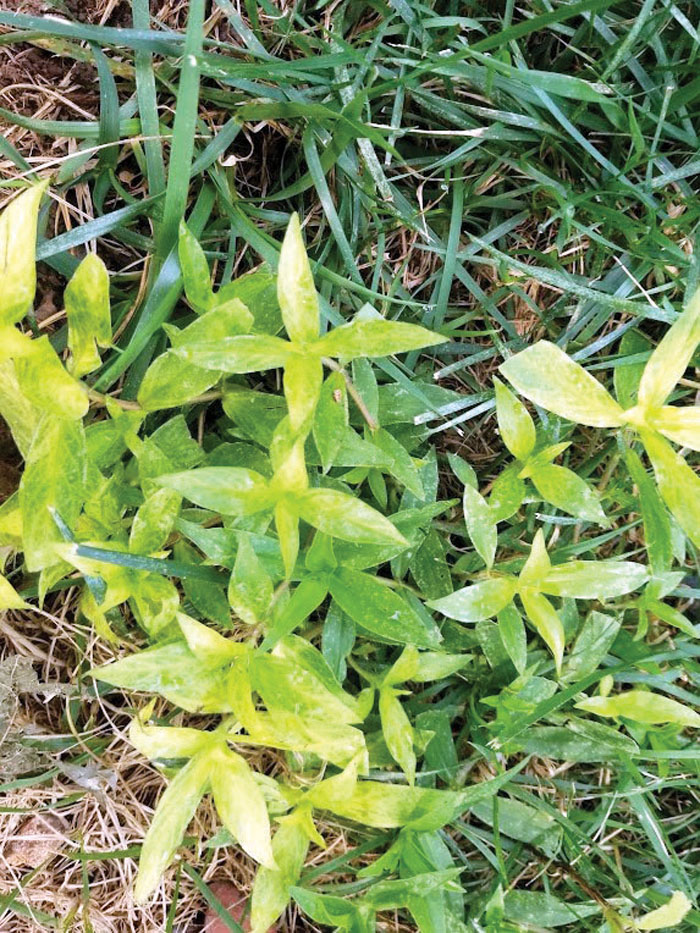H&G Q&A: Controlling unwanted growth, pruning shrubs
Published 12:00 am Saturday, August 20, 2022

- Virginia button weed
Unseasonable fall-like weather has many home gardeners venturing outdoors to work in their landscapes and vegetable gardens. Below are a few questions asked that you may have pondered in your gardening projects.
Question: I have sprayed numerous times to control Virginia buttonweed in my lawn. Can you tell us how we can eliminate this persistent lawn weed?
Answer: Virginia buttonweed is a perennial broadleaf weed and is difficult to control in cool-season lawns. The weed itself looks much like a grass, but it is actually a broadleaf weed that must be controlled with post-emergence broadleaf herbicidal sprays. The weed has a small white flower and often turns yellow in late summer due to a virus. Best results for control are repeated applications applied in the spring and repeat when regrowth occurs usually in 4 to 6 weeks. As you have discovered, Virginia buttonweed is a very difficult weed to control. Go to https://www.turffiles.ncsu.edu/weeds-in-turf/virginia-buttonweed/ for a complete listing of post emergence herbicides labeled to control this weed.
Question: I have a number of very small tree saplings that seem to reoccur each year in my flower plantings. Is there anything I can spray on the saplings to keep them from coming up each year?
Answer: Yes, the best way to control reoccurring small saplings is to treat the stump when you prune them back with a brush killer or glyphosate. The stumps need to be painted, full strength, immediately after cutting to allow the herbicide to translocate to the root system.
Question: My shrubs have grown a bit over the past few months. Can I prune them now?
Answer: Yes, light, judicious pruning can occur all during the year, however, avoid pruning spring flowering shrubs such as azaleas and rhododendron. If you prune them now, you will eliminate many of your flowers. Prune those shrubs in the spring after bloom. Prune shrubs back hard such as holly, red tips or boxwood in the early spring to avoid winter damage. Maples should be pruned in late summer while they have leaves to avoid excessive bleeding in the spring.
Question: I was visiting some friends in Lewisville this past week and noticed a few maple trees were already showing fall color. Some of the trees in one area were almost entirely red. Why are they turning so early?
Answer: Some trees naturally turn early in late summer and early fall, but it’s probably stress related. A number of stress-related situations such as insects, disease, drought or nutrimental deficiency are most likely the culprit.
Darrell Blackwelder is the retired horticulture agent and director with the North Carolina Cooperative Extension Service in Rowan County. Contact him at deblackw@ncsu.edu.



